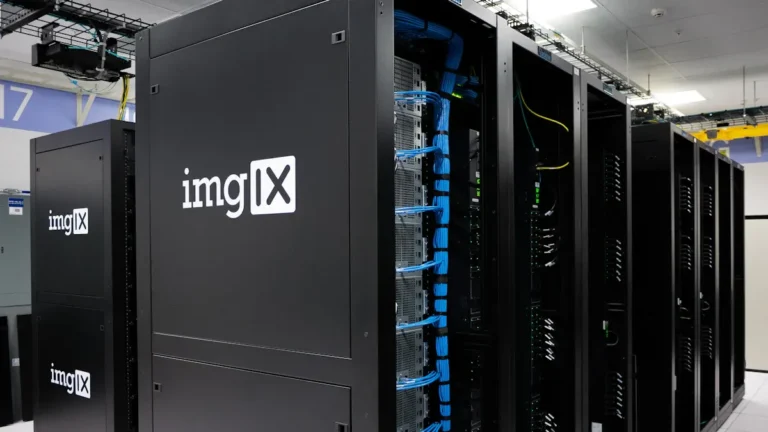The Critical Role of the Power Supply in Server Infrastructure
The server power supply unit (PSU) is the unsung hero of any data center or IT environment. While CPUs and memory often take the spotlight, the PSU is the foundational component that dictates a server’s reliability, operational cost, and even its thermal footprint. A substandard or incorrectly specified PSU can lead to system instability, unexpected downtime, and inflated energy expenditure. Conversely, a well-chosen unit ensures consistent, efficient power delivery, safeguarding critical operations and contributing to a lower Total Cost of Ownership (TCO).
Selecting the right PSU is a multi-faceted process that extends beyond simply matching a wattage number. It involves a careful evaluation of power requirements, efficiency ratings, redundancy needs, and physical compatibility. This guide provides a professional framework for navigating these considerations to select the ideal power supply for your specific server infrastructure.
Key Factor 1: Calculating Power Consumption Requirements
The first and most fundamental step is to accurately determine the server’s power budget. This requires summing the maximum power draw of all internal components, including the CPU(s), memory modules (DIMMs), storage drives (SSDs/HDDs), network interface cards (NICs), and any GPU or accelerator cards.
Under-provisioning, or choosing a PSU with insufficient wattage, is a critical error. Under load, the server will either fail to boot or experience sudden shutdowns as the PSU’s over-current protection is triggered. This leads to unacceptable downtime.
Over-provisioning, while seemingly a safer option, introduces its own set of inefficiencies. As will be discussed, power supplies operate at peak efficiency when under a specific load percentage. A significantly oversized PSU will run at a lower, less efficient point on its curve, wasting energy and generating excess heat.
Best Practice:
Utilize online power supply calculators provided by server manufacturers like Dell, HPE, or system integrators like Supermicro. These tools allow you to input your exact server configuration and receive a precise power consumption estimate. Always account for future scalability; if you plan to add more drives or a second CPU, factor that into your initial calculation.

Key Factor 2: Understanding Power Efficiency Ratings (80 Plus Certification)
Power efficiency is a measure of how effectively a PSU converts AC input power from the wall into DC output power for the server’s components. The difference is lost as waste heat. The industry standard for measuring this is the 80 Plus certification program.
Decoding the 80 Plus Tiers: From Gold to Titanium
The 80 Plus program has several tiers, each demanding a higher level of efficiency. For enterprise and data center environments, the most relevant tiers are Gold, Platinum, and Titanium.
| 80 Plus Certification Level | 10% Load | 20% Load | 50% Load (Peak Efficiency) | 100% Load |
|---|---|---|---|---|
| 80 Plus Gold | N/A | 90% | 92% | 89% |
| 80 Plus Platinum | N/A | 92% | 94% | 91% |
| 80 Plus Titanium | 90% | 94% | 96% | 94% |
| (Note: Efficiency figures shown are for 230V EU Internal Non-Redundant power supplies. Values may vary slightly for other voltages and types.) |
As the table demonstrates, a Titanium-rated PSU is significantly more efficient than a Gold-rated one, especially at lower and higher loads. The Titanium certification is unique in that it also mandates efficiency measurement at a very light 10% load, reflecting modern server workloads that often idle.
The Efficiency Curve and Its Impact on TCO
A PSU does not maintain the same efficiency across its entire operational range. Efficiency peaks around 50-60% of the unit’s rated capacity and drops off at very low or very high loads. This is why “right-sizing” the PSU is critical. An 800W PSU powering a 400W load (50% capacity) will be more efficient than a 1600W PSU powering the same 400W load (25% capacity).
The cumulative financial impact of higher efficiency is substantial in a multi-server environment.
Hypothetical Annual Cost Savings (Per Server):
Assumptions: 400W constant load, 24/7 operation, $0.15/kWh electricity cost.
| PSU Specification | Efficiency at 400W | Input Power Required | Annual Energy Cost | Annual Savings vs. Gold |
|---|---|---|---|---|
| 800W Gold | ~92% | 434.8 W | $571.31 | (Baseline) |
| 800W Platinum | ~94% | 425.5 W | $559.13 | $12.18 |
| 550W Titanium | ~96% (at ~73% load) | 416.7 W | $547.53 | $23.78 |
While the savings per server may seem modest, multiplying this across a rack of 20 servers results in nearly $500 in annual savings by choosing the correctly-sized Titanium PSU over a Gold unit. This does not even account for the secondary savings from reduced cooling requirements due to less waste heat.
Key Factor 3: Redundancy for Uninterrupted Operation
For any mission-critical server, a single point of failure is unacceptable. The PSU is a mechanical component with a finite lifespan, making it a common failure point. Redundant power supplies are the solution.
What is a Redundant Power Supply?
A server equipped with redundant PSUs has two or more power supplies installed. If one unit fails, the other(s) instantly take over the full load, ensuring the server continues to operate without any interruption. This allows a system administrator to replace the failed unit while the server remains online.
Common Redundancy Configurations (N+1 vs. N+N)
- N+1 Redundancy: This is the most common configuration. ‘N’ represents the number of PSUs required to power the server. The “+1” is the additional redundant unit. For most dual-socket servers, this is a 1+1 configuration. Both PSUs are active and share the load (e.g., 50/50 split). If one fails, the other immediately handles 100% of the load.
- N+N Redundancy: This provides a fully redundant power path. For example, in a 2+2 configuration, two PSUs could be connected to one power grid (PDU A) and the other two to a separate power grid (PDU B). This protects against both a PSU failure and a failure of an entire power circuit.
Hot-Swappable PSUs and Serviceability
Most modern server PSUs are hot-swappable. This means a failed unit can be removed and a new one inserted without needing to power down the server. This feature is essential for maintaining high uptime and simplifying maintenance. Designs from major OEMs like HPE and Dell often feature tool-less, easy-access mechanisms for rapid replacement.
Key Factor 4: Form Factors and Server Compatibility
PSUs are not one-size-fits-all. They come in various physical shapes and electrical connection standards, which must match the server chassis and motherboard.
Common Slot (CS) and Flexible Slot (Flex Slot) Power Supplies
Major server vendors have developed their own standardized form factors to be used across their product lines. For instance, HPE Flexible Slot Power Supplies deliver a common electrical and physical design that is compatible across their ProLiant Gen10, Gen11, and select Apollo servers. This simplifies the spare parts inventory for organizations running a large fleet of HPE hardware.
Proprietary vs. Standardized Formats (CRPS)
Beyond single-vendor standards, the industry has moved towards open standards. The Common Redundant Power Supply (CRPS) specification, driven by companies like Intel and Delta, defines a common form factor (e.g., 73.5mm width) and feature set for use across multiple server platforms. This gives customers more flexibility and promotes competition.
Physical Dimensions (1U, 2U, etc.)
The PSU’s dimensions must physically fit within the server chassis. A PSU designed for a 2U rack server will typically be taller than one designed for a compact 1U server. It is crucial to select a PSU specifically certified for the target server model.
Key Factor 5: Input Voltage and Data Center Environment (AC vs. DC)
AC Power Standards (110V/120V vs. 200-240V)
While many PSUs support a wide input voltage range (e.g., 100-240V AC), they operate more efficiently at higher voltages. For the same power output (P = V × I), a higher voltage (V) results in a lower current (I). Since power loss due to resistance is proportional to the square of the current (P_loss = I²R), running servers at 208V or 240V significantly reduces energy waste compared to 120V. Most enterprise data centers are wired for high-voltage power delivery for this reason.
The Rise of DC Power in Modern Data Centers
Some hyper-scale and telecom data centers utilize a DC power infrastructure. PSUs designed for this environment typically accept a -48V DC input. This eliminates several AC-to-DC conversion steps within the power distribution chain, leading to even greater overall efficiency. While less common in typical enterprise settings, it is an important option for specialized environments.
Making the Final Decision
Choosing the right server power supply is a strategic decision that balances performance, cost, and reliability. The process involves:
- Calculating your maximum power load, including room for growth.
- Selecting the highest 80 Plus efficiency tier (preferably Titanium) that your budget allows.
- Right-sizing the PSU wattage to ensure it operates near its peak efficiency curve under your typical workload.
- Implementing N+1 or N+N redundancy for all critical systems.
- Verifying that the PSU’s form factor, dimensions, and connectors are fully compatible with your server model.
With these technical specifications defined, the next step is to source the component. A reliable server power supply unit from a specialized supplier ensures that the product meets stringent quality and compatibility standards.
Frequently Asked Questions (FAQ)
1. What is the difference between a server PSU and a desktop PC PSU?
Server PSUs are engineered for 24/7 reliability and serviceability. Key differences include: support for redundancy (dual units), hot-swappable form factors, higher efficiency ratings (typically Platinum or Titanium), and advanced management features like PMBus for remote monitoring. Desktop PSUs are generally single, non-hot-swappable units with a wider range of efficiency ratings.
2. Can I mix and match power supplies of different wattages or models in a redundant server?
This is strongly discouraged. While some systems may technically function, mixing PSUs can cause unpredictable load-balancing behavior, firmware conflicts, and efficiency losses. The server’s power management controller is designed to work with identical units. Best practice is to always use two identical PSUs from the same manufacturer and model.
3. If one PSU fails in a 1+1 redundant setup, what should I do?
The server will continue to run on the remaining PSU. The system’s management interface (like Dell’s iDRAC or HPE’s iLO) will generate an alert indicating the failure. The failed PSU should be replaced as soon as possible to restore redundancy. Since it is hot-swappable, this can be done without scheduling downtime.
References
- HPE Server Power Supplies. Retrieved from https://buy.hpe.com/us/en/options/power-supplies/server-power-supplies/c/3446193
- Delta Electronics Server Power. Retrieved from https://www.deltaww.com/en-US/products/Server-Power/ALL/
- Supermicro Server Power Supplies. Retrieved from https://store.supermicro.com/server-accessories/power-supplies.html
- xByte Technologies, Power Supplies for Dell Servers & Storage. Retrieved from https://www.xbyte.com/products?class=Power+Supplies&class_id=57
- ServerDiskDrives, “How to Choose the Right Power Supply for Your Server”. Retrieved from https://serverdiskdrives.com/blogs/server-hardware/how-to-choose-the-right-power-supply-for-your-server
- XTT, Server Power Supply. Retrieved from https://sz-xtt.com/server-power-supply/



